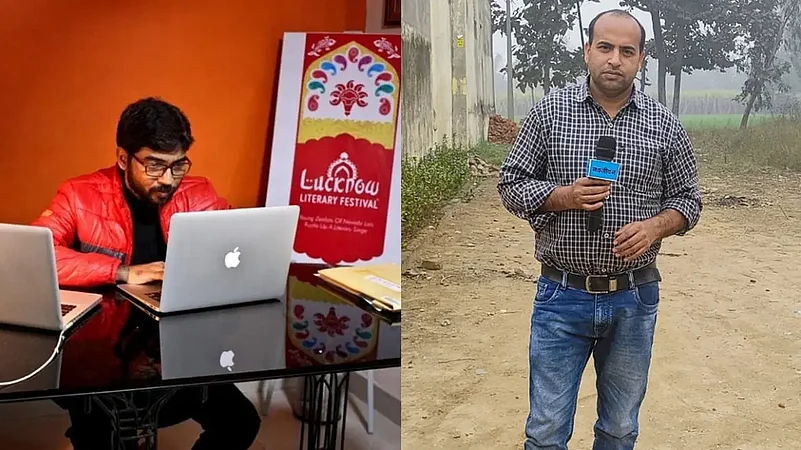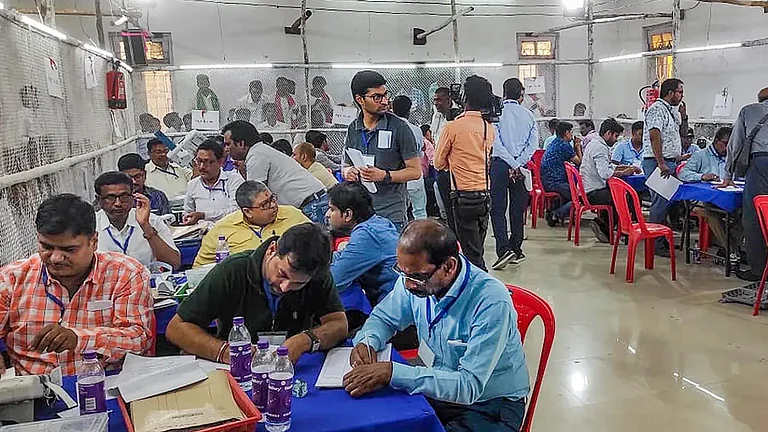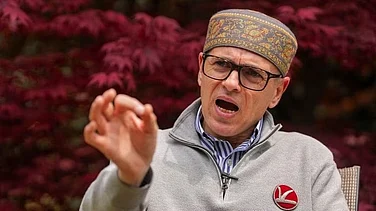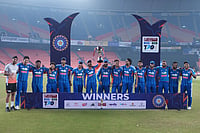For the 2022 Uttar Pradesh assembly elections, Shamim A. Aarzoo, a Lucknow-based journalist, reached out to political leaders, candidates and their party men. Quite normal, you might say, for any journalist reporting from the Hindi heartland. However, Aarzoo is not your typical political journalist. He edits a monthly online magazine Lucknow Observer that highlights the culture, cuisine, art and craft, and history of the Awadh region. “I was never interested in hard news. For me, the decaying heritage buildings, old temples with beautiful arches and intricate carvings in rural areas, culture, and even the lost flavour of kakori kebab, are more important,” says Aarzoo. So when other journalists field political questions to party candidates, Aarzoo asks them about the state of heritage buildings in their constituencies, their plan for conservation, and their stand on forgotten memorials. “Everyone highlights the insignia of the Rumi Gate while mentioning Lucknow, but no one cares about the crack that has appeared on it,” he adds.
Against UP’s highly charged political climate, there are few takers for Aarzoo’s dedication. “Usually parties and their candidates skip me once they understand the motive of my conversation. I know my line of questioning will not fetch them votes. But I try, and maybe someday this subject will be on the agenda of political parties,” says a hopeful Aarzoo, who often shows old pictures of monuments in their former glory to politicians in the hope their focus may shift to do something about the crumbling heritage.
Sitting in his home at Indira Nagar, where the ground floor serves as his office, he recalls the support rendered by many stalwarts during his various campaigns. Journalists often call him up while covering stories related to Lucknow’s lost heritage. That’s when Aarzoo’s photo collection comes in handy. “But such stories are fast drying up. And I may be a lone crusader who is attempting to bring the stories to the mainstream, else these are made visible while celebrating certain occasions,” he laments.
There are other journalists like Aarzoo in Uttar Pradesh, striving to bring forth unheard voices. Most of them are stringers and some run their own organisation, have their own YouTube channels and social media pages. This has been possible due to technology and its reach. They have lakhs of subscribers and crores of views, but remain unsung in UP’s vast terrain. Native viewers, however, laud them as the real patrakar (journalist) for their hyperlocal news items. Often mainstream journalists from Lucknow or Delhi land in their area, and the local journalist becomes their guide, arranging bytes and resources. The story, however, is attributed to the ‘big’ journalist, and the local one is lost in oblivion. Referred to as stringers, most of them even do not have access to basic facilities such as identity cards, regular remuneration, etc. Undeterred, this army of local journalists still careers on.
Dharmendra Srivastava from Azamgarh, the parliamentary seat of Samajwadi Party president Akhilesh Yadav, is a veteran journalist with 20 years of experience. Srivastava is associated with a news agency, but also runs his own YouTube channel Good News. The channel is quite popular in Azamgarh as it offers 15 fatafat news through WhatsApp. Every small story, ranging from local crime, development, human interest and social issues, is featured in Good News. Srivastava has set up a studio and works with three journalists. “We face the same problems as other media houses, but why worry about them? We give people a voice. We have their blessings as they appreciate our work,” says Srivastava. He has been quite busy covering these elections as he found plenty of stories to report on. Many breaking stories that went on to make headlines in mainstream media were shared by Good News. “I had approached political leaders visiting Azamgarh to visit our studio so we can record them properly. Some of them agreed, but most of them said they didn’t have the time.” Being a YouTube channel, Srivastava said it is hard to gain recognition despite the channel having close to 59,000 subscribers and over one crore views till date. Many journalists often follow his inputs, but he gets little or no credit.
In the western region at Muzaffarnagar, Aas Mohammad Kaif, who views former Indian cricketer Mohammad Kaif as his idol and has taken on his surname, seems to be in a better position than Srivastava. Aas is the editor of the Hindi edition of TwoCircles.net, an online news portal, and also contributes to other media houses. He is a great point of contact for any information related to various districts of Western UP. During the elections, his interviews of various leaders including Rakesh Tikait were very well received. “In this election, top journalists hardly did any ground reporting. Instead, the big names came here [to UP] with their myopic vision. Each one got the feel which they desired, and most of their reporting in front of the camera was fake. You do not read the people but people understand and deliver the answer which you like,” Aas sums up.
Sriniwas Tripathi, a local reporter from Barabanki, writes for several Hindi dailies. While he lives just 27 km from Lucknow, Tripathi is more attracted to Ayodhya and its adjoining areas. Due to his frequent shuttling between Barabanki and Ayodhya, he has become a veteran of sorts for local political updates. “Writing is my passion. It is true that mainstream journalists have their contacts who help them get the correct information at the right time. But eventually my reports end up in the local pages of some dailies. Once the stories get treated by other journalists in the state capital, they spring to page one,” informs Tripathi. However, for the 2022 election coverage, Tripathi, who has all political stalwarts and their political history on the tip of his tongue, faced too many hardships. “This election lacked lustre as there were few takers for rural reporting. In every phase, everything was confined to VIP seats and analysis. I took up the cause of local weavers who are starving, sugar mills that shut down, and the spiralling land prices around Lucknow…None of these could find space for publication,” he rues.
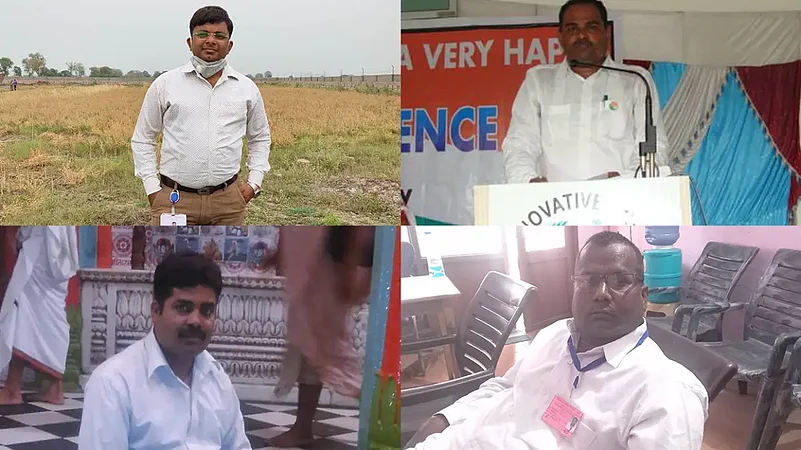
Bundelkhand region is a hit with Delhi-based journalists for its ready-made stories of strife and lack of development. It also has the Chambal ravines, once home to many dreaded dacoits with prize money on their heads. The dacoits are hardly significant today and many of them are dead. Still the region makes headlines whenever an encounter takes place. Ziya ul Haque, a journalist from Chitrakoot, is well-versed with Chambal’s dark history, and his views have been featured in many national and international media. “Many of these dacoits’ relatives are in politics. For instance, the son of Dadua is a former MLA and is contesting this time. He was irked when his seat was changed, but eventually agreed to contest from it.” Haque’s valuable inputs on this development were aired on television. However, the region missed out on many good stories in this election as local inputs had dried up due to over reliance on covering rallies and conducting interviews. Haque, meanwhile, has something to celebrate. “My seniors in the channel recently promoted me.”
ALSO READ: Media And Manipur: Courage Under Fire
Shivkumar runs poorvanchalnews.com in Ghazipur district. The portal covers news from Ghazipur and adjoining districts in the Purvanchal region. Kripa Krishna, also associated with the portal, feels that the main thorn is the inability to make a mark in mainstream media. “Hardly any news agency recognises us. We work in a group with little resources, and are often dependent on each other,” Krishna tells Outlook. However, Shivkumar feels that local news portals connect better with people. “We offer them news, they read it, and can identify themselves. We have better relations with local people than major dailies,” he says. Shivkumar is a veteran and has been in mainstream media for over one decade and is quite aware of the market. “Ghazipur, and in fact, the whole of Purvanchal, is about politics and crime. No one can match our deep-rooted network of reporters. Many of our stories are ‘stolen’ by mainstream media,” he adds.
Despite this, Shivkumar still feels the time has come for mainstream media to realise the utmost importance of local media. “You can no longer treat the stringers from villages rudely. They only want respect and dignified treatment. If you fail to do this, you will fail,”
he says.
(This appeared in the print edition as "The Invisible Newsmakers")
ALSO READ






